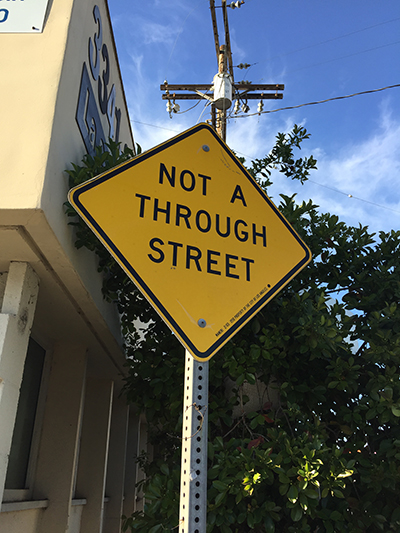I’m teaching a class at the UCLA Extension School about developing your original story. Over 12 weeks, we’re exploring the basics behind TV movies, mini-series and TV shows. The class culminates in the students developing a pitch. They’ll turn in a written version and then they’ll pitch their idea in front of their peers.
I believe pitching is one of the hardest things you can do. It takes a ton of imagination to come up with a good idea and a lot of courage to share it with other people. As a playwright, I’m used to writing things before I talk about them. And I believe, sometimes it’s better to write something and then pitch it afterwards. To make it easier on my students, I came up with a template for the process. They’re being asked, basically, to fill in the relevant sections: logline, characters, theme, teaser, etc. To clarify further how it should all look and feel, we’ve been reading pitch documents from the real world.
None of those documents follow my template exactly. Of course, this makes complete sense. In the real world, people play fast and loose with the elements. Produced writers do things their own way. They make up a form, or they riff on what they’ve seen. After, all, they’re “experts”.
I suppose it was inevitable that one of my students would push back as we talked about the assignment. He wondered why we were doing it in such a structured way when that wasn’t what we were seeing from the pros. He wanted to toss aside the conventions and do something different. If it’s different in the real world, he wanted to know why it wasn’t going to be different in my classroom.
I relate to his question. I’ll admit that I’m fond of rules, to a certain extent, and I hate them, too. I’m not alone. Often, in creative endeavors, artists want to jump in and DO IT. Sculpt, dance, sing, write with abandon. Why can’t we just do what we want? Isn’t that what art is all about?
Yeah. It is.
To a certain extent, we, as artists, should be breaking rules. It’s appropriate. It’s desirable. And, in order to break the rules, you have to know what you’re doing. My explanation to my student is that I’m offering structure largely because they’ve never done this before. It’s a guide – it’s a path. One of my grad school teachers said: “Technique is for when inspiration fails you.” It’s good to know the rules and to follow them – for as long as you can and for as long as it’s useful.
Writers in the real world do break rules. Sometimes it keeps us from boredom – with the process – with ourselves. I love to mix it up as much as the next guy. And I’ve experienced some crazy impulses in my work that I didn’t know how to recover from. I’ve had those moments (and I’m sure you have too) that were bombastic and magical. And then, I come back to Earth, not sure what happened or how to keep it going. Often, in my day-to-day writing life – the breadcrumbs disappear. The path is gone. And I lean into the structure and rules and techniques that I used to dismiss.
Can’t I just do what I want? Yes. For as long as I can and as long as it’s useful. In spite of the appeal of the wild approach – even that can get old. I’m not sure my student knows that yet. It’s good to know how to build a foundation when you need to. And to wander off when that works.
Bottom line, for my students and for me, rules can be a gift. In the joyous wilderness of my creative life, moving ahead as I see fit day after day, ultimately, I want to know how to get back home. That knowledge keeps me sane. That knowledge keeps me going.
How do you know if you’re on or off the path? And what do you do about it? I’d love to hear your wisdom on this.
Happy creative trails.



